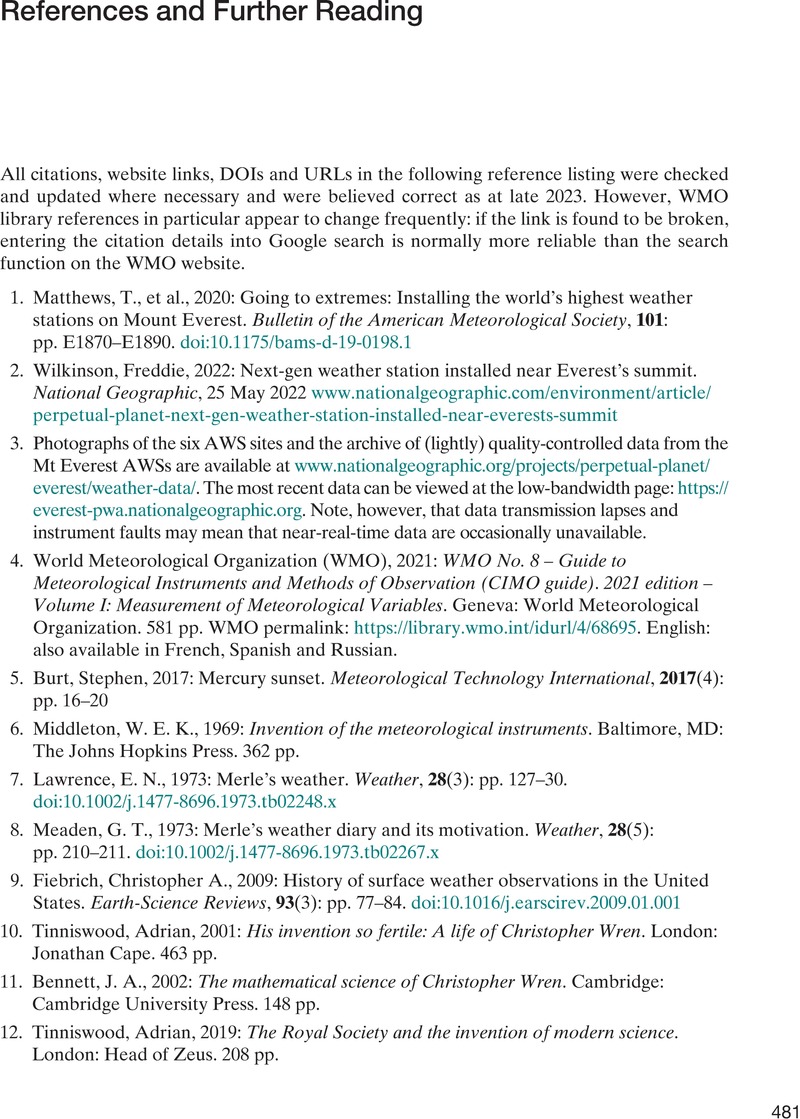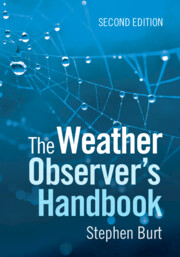Book contents
- The Weather Observer’s Handbook
- Reviews
- The Weather Observer’s Handbook
- Copyright page
- Dedication
- Epigraph
- Contents
- Foreword
- Acknowledgements
- Author’s note
- Abbreviations, footnotes and references
- Part I The basics
- Part II Measuring the weather
- Part III Making the most of your observations
- Book part
- References and Further Reading
- Index
- References
References and Further Reading
Published online by Cambridge University Press: 21 May 2024
- The Weather Observer’s Handbook
- Reviews
- The Weather Observer’s Handbook
- Copyright page
- Dedication
- Epigraph
- Contents
- Foreword
- Acknowledgements
- Author’s note
- Abbreviations, footnotes and references
- Part I The basics
- Part II Measuring the weather
- Part III Making the most of your observations
- Book part
- References and Further Reading
- Index
- References
Summary

- Type
- Chapter
- Information
- The Weather Observer's Handbook , pp. 481 - 500Publisher: Cambridge University PressPrint publication year: 2024



